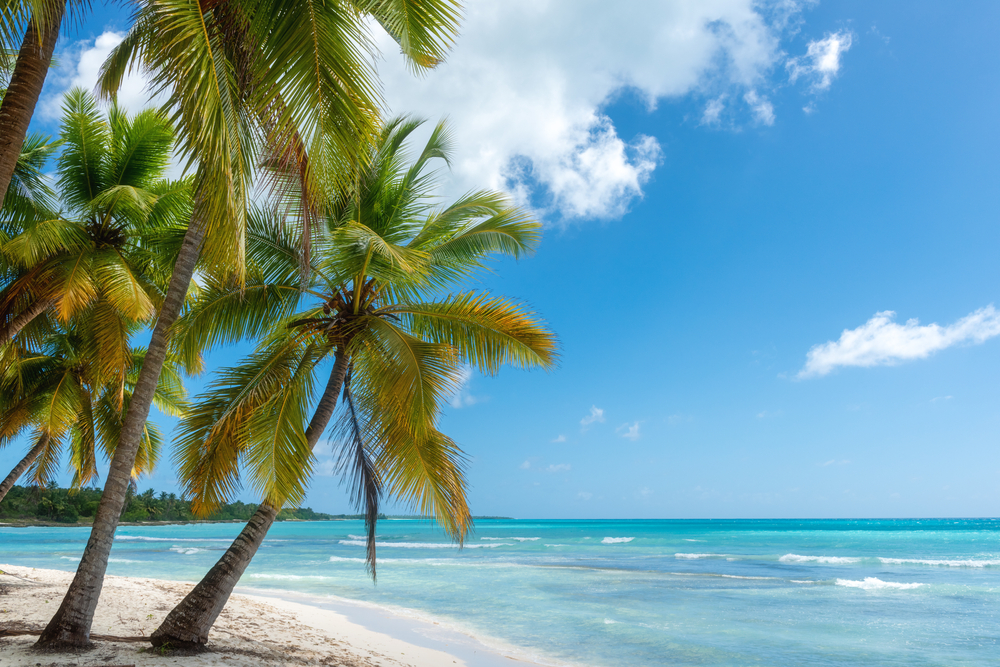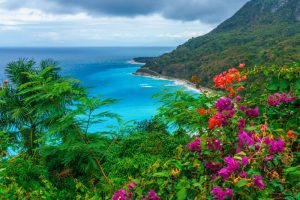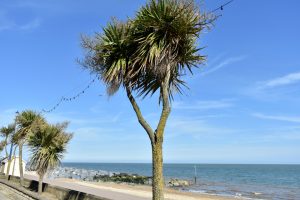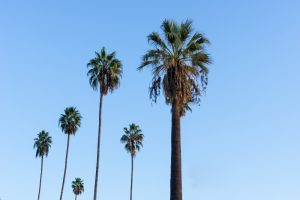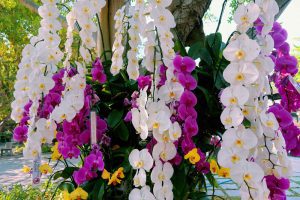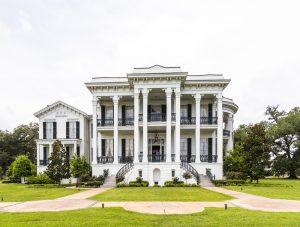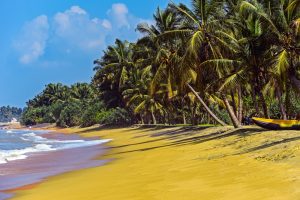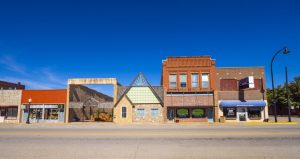Palm trees thrive in tropical climates, so it comes as no surprise that the Dominican Republic is bursting with a bunch of beautiful species.
Although not all of the palm trees that you see in the Dominican Republic are native to the country, they have quickly been naturalized here thanks to its perfect growing environment.
You will see palm trees just about everywhere you go, whether it be out exploring the untouched parts of the country or wandering through downtown streets and residential neighborhoods.
Palm trees grow in all different shapes and sizes, but many have classic features like fan-like leaves and stout stems.
Check out this list of the thirteen types of palm trees in the Dominican Republic to better understand the beautiful trees you will be walking amongst on your next trip.
Table of Contents
1. Royal Palm

Also referred to as the Puerto Rico Royal Palm, the Royal Palm is actually native to many countries all throughout Latin America including the Dominican Republic.
This particular palm tree is grand in its appearance and can reach an impressive height of over fifty feet with the tallest on the record being a whopping 87 feet.
You’ll notice that the stems of these picturesque palms are relatively smooth to the touch and can range in color from grey to brown.
Even more impressive than the overall height of this palm is the size of its leaves, with some trees boasting vibrant leaves that stretch out over ten feet.
Keep in mind that you won’t find these beautiful trees atop any of the country’s mountains because these palms need to live below an elevation of twenty-five hundred feet in order to thrive.
Every so often you may notice birds like the white-crowned pigeon or the rare Ridgway Hawk within the vicinity of these palms because they are a common destination for feeding and nesting.
You will find these palms all throughout the country because of their tolerance for most environments and because of this, the Royal Palm has even become one of the most common palm trees in the Dominican Republic.
This is one of the best palm trees for outdoor decoration since the roots aren’t aggressive enough to alter pavement and it has the ability to grow in different soil types and in the presence of challenges like air pollution.
2. Coconut Palm
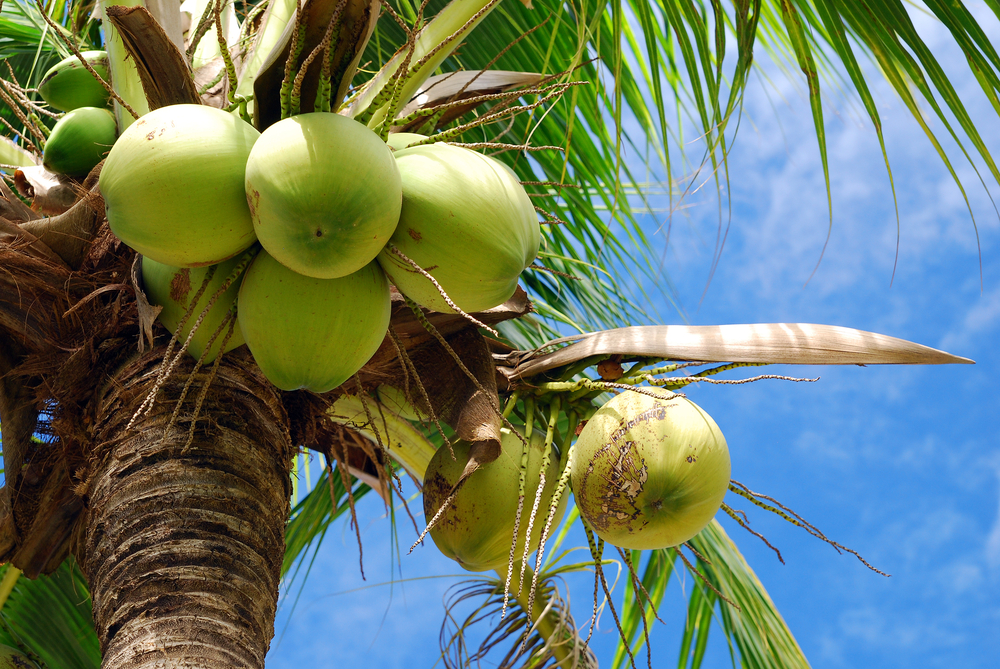
Considered one of the most popular palm trees, you can admire the beauty of a Coconut Palm, or coconut tree, from just about anywhere with a tropical climate.
Interestingly enough, although this palm tree can be traced back to various countries, the origin of this hardy plant is actually a complete mystery.
As long as the coconut tree is planted in an area with an average temperature of about seventy degrees Fahrenheit and a yearly rainfall of no less than thirty inches, this iconic tree can thrive.
Unlike some palm trees, the coconut tree is made up of one giant stem that reaches a towering height of about one hundred feet, if given the opportunity.
The stem itself is often grey in appearance and will typically bend in a way that makes the palm tree look like it’s leaning to one side.
Looking up, you’ll notice the palm tree’s impressive, feather-like leaves as they stretch out nearly twenty feet to create a canopy for their rich fruit.
Speaking of fruit, the abundance of coconuts that grow on these trees is part of the reason why they are so popular – they serve as more than just a pretty sight to look at.
Although you will see your fair share of coconut trees around town when exploring the Dominican Republic, these palm trees are primarily found on farms.
3. Silver Thatch
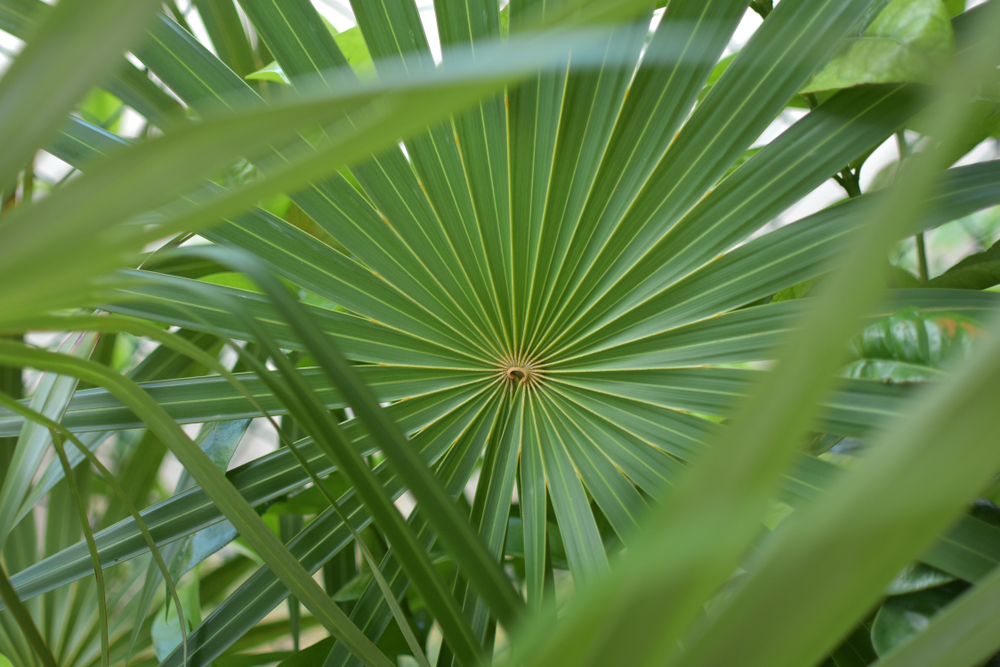
Also known by its scientific name Coccothrinax spissa, the Silver Thatch palm is one of the few palm trees that are actually native to the Dominican Republic.
This palm tree, although native to many countries throughout Latin America, is most closely associated with the Dominican Republic.
There are many different features that make this palm tree unique but one of the most interesting is its skinny stem paired with heavy swelling at its center.
This odd formation is the reason why you will see so many people stopping to take a picture with this towering fan palm. Not to mention the fact that it has an average height of more than thirty feet!
These leaves feature a dark green color when viewed from a distance, but up close, one can admire the frond’s silvery undersides.
If the one-of-a-kind beauty of this palm tree alone isn’t enough to impress you, then you should also know that this beauty is more than just something fun to look at.
Premature leaves make for a delicious dish and once fully grown, these leaves function as herbal medicine for anyone suffering from diseases like uterine fibroids or hot flashes.
You won’t see this palm used as an ornament in town but rather are more likely to stumble upon it during treks in the wilderness.
The Silver Thatch palm tree needs wide open spaces to thrive and will often be found on its own in the depths of a savannah or along the edges of dry woodland.
Regardless of how wide an area may be, the palm tree simply won’t be able to grow in locations where the elevation exceeds one thousand feet.
This palm tree is also considered endangered because of threats to its environment despite cattle ranchers and urban developers attempting to cultivate it in new places.
4. African Oil Palm
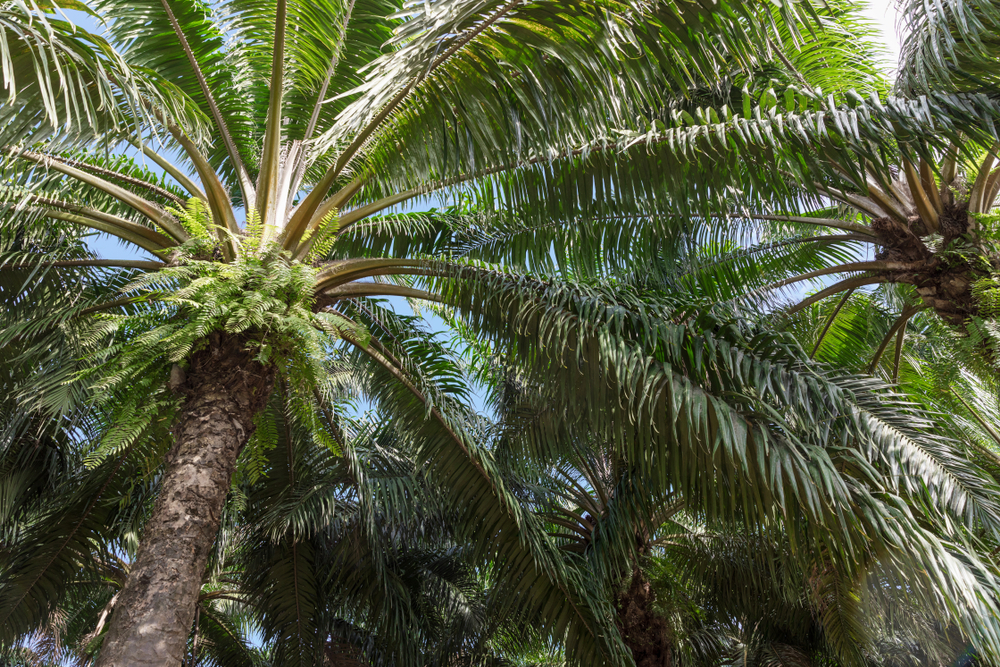
Often just referred to as an Oil Palm, the African Oil Palm is not native to the Dominican Republic, but you will definitely find this palm tree in abundance here.
Although the date of origin is uncertain, it is clear that this type of palm tree was first established in West Africa, but it quickly began appearing all throughout the world thanks to its rich supply of oil.
In fact, the African Oil Palm can produce more oil than any other plant of its kind, which makes it an asset to every country that it has the ability to grow in.
This palm tree is another example of a single stem palm, and it can reach an impressive height of over sixty feet throughout its thirty-year lifespan.
Along those same lines, the palm’s leaves are equally impressive, as they grow in clusters of twenty or more and can stretch out nearly twenty feet in length.
But the real showstopper is the red fruit that grows on this palm as it is the lead contributor for oil production in most tropical countries.
All parts of the fruit can be extracted for oil that is popular for cooking and creating bath products, so you’ll notice that palm oil is extremely popular in areas where African Oil Palms are in abundance.
As beneficial as these palm trees may be, they have sparked some serious controversy because some countries have taken advantage of their wealth.
For instance, in the Dominican Republic, you will find these palm trees by the hundreds in large oil plantations dedicated to extracting the oil from its fruits.
One issue is that these palm trees only have a lifespan of about thirty years, which means new land is frequently needed to grow new palm trees as the old ones die.
This has a way of altering the other species in the environment as bio-diverse areas are being bulldozed to make way for more oil palms.
So, when you are driving through the Dominican Republic and you see a massive field of dead palms, you will know that you are passing the work of an oil plantation.
5. Footstool Palm
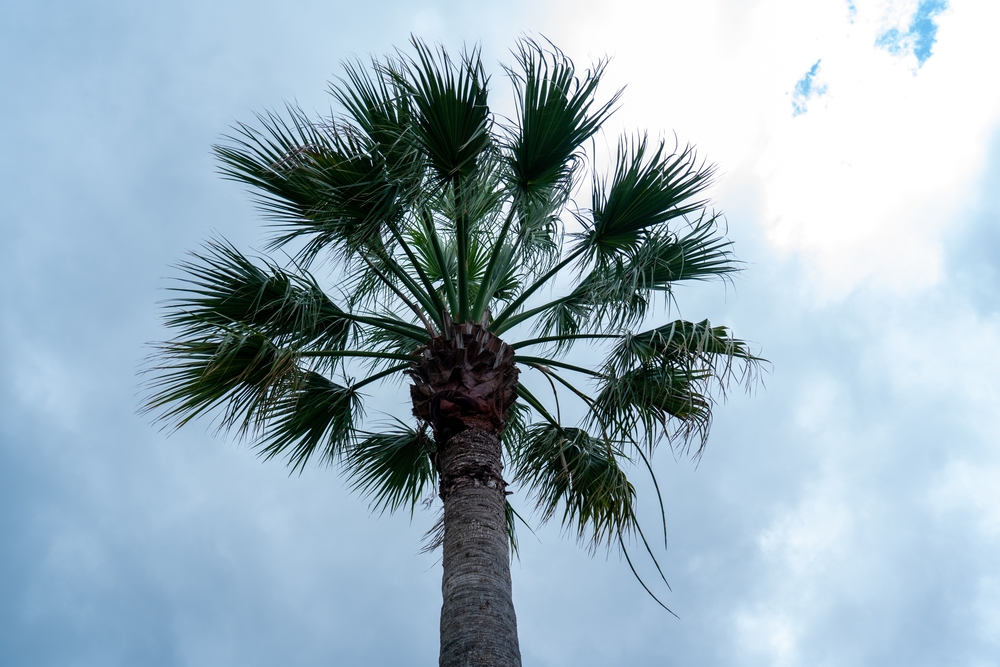
The Footstool Palm goes by many names, like the Hispaniola Palmetto and the Dominican Palm, so it’s no surprise that this beautiful palm tree can be found in the Dominican Republic.
This native palm tree is known primarily for its abundance in the Dominican Republic, but it is important to note that you can also find this beauty in countries like Haiti and Cuba.
Regardless of which country you find the Footstool Palm in, there is one growing factor that must remain constant: this type of palm tree cannot grow unless it is located in an area less than three thousand feet above sea level.
And usually, the Footstool Palm can be found in forest areas that have recently undergone a timber harvest because this is the environment in which it can thrive.
This particular palm is a sight to enjoy when exploring the wilderness of the Dominican Republic, but this doesn’t mean you won’t find it in residential neighborhoods as well.
Although the trees cannot grow to their full potential outside of their usual environment, they are surprisingly able to survive the full course of their life in people’s front yards and along the sides of busy streets.
This means that you can enjoy the view of a Dominican Palm from just about anywhere if you know what you are looking for.
These palms grow with a singular stem that is plump in diameter and can reach an impressive height of over thirty feet at its prime.
Each palm tree has about thirty leaves that, with the help of its many leaflets, fan out to provide a great place to enjoy some time in the shade.
When sitting below a Footstool Palm, make sure to look up to admire its unique, black, pear-like fruit.
6. Mediterranean Dwarf Palm
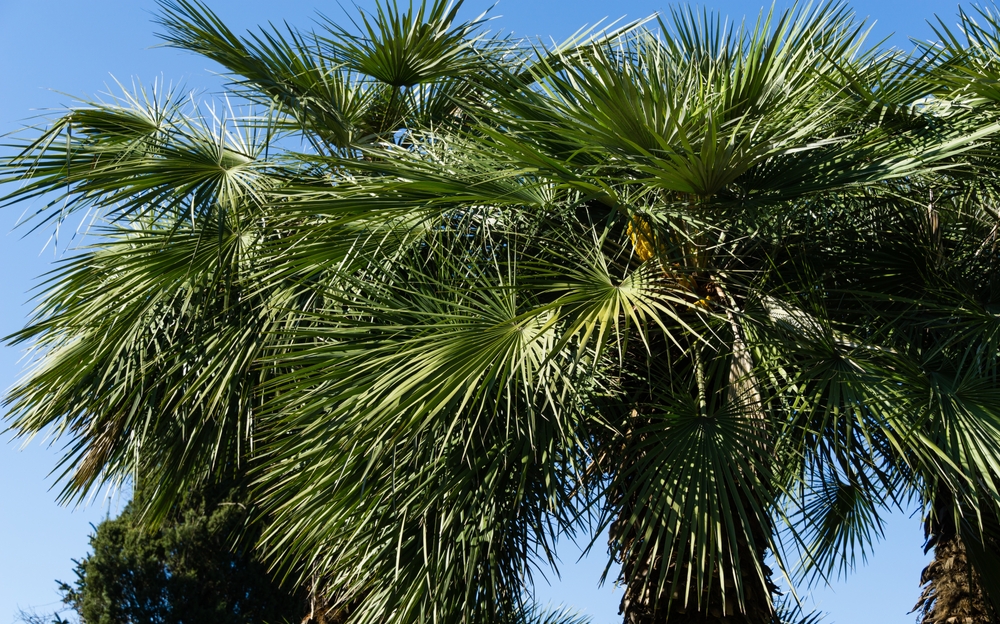
Also known as the European Fan Palm, the Mediterranean Dwarf Palm is unlike most of the other palm trees you’ll find in the Dominican Republic, and it’s not just because of its size.
While many species of palm trees need constant warm weather in order to survive, the Mediterranean Dwarf Palm is able to handle occasional cold weather and still be able to grow.
In fact, the Mediterranean Dwarf Palm thrives in an environment with varying temperatures and has even been known to survive through brief periods of snowfall.
This type of palm is impossible to miss because its drastic difference in size makes it look more like a ground shrub than an actual palm tree.
However, in some cases where the Mediterranean Dwarf Palm is able to grow undisturbed, this unique palm tree can grow stems as tall as twenty feet.
You can easily identify this palm tree by its composition with a plentiful number of stems growing from its base.
Much of the growing process happens underground, so it takes years before this palm will show off some of its stems and until then it will resemble a palm-like bush.
This characteristic is part of what gives the palm its name and it also is the reason why it is such a popular addition to residential homes.
In other words, always keep your eyes out for the Mediterranean Dwarf Palm when exploring the Dominican Republic because you never know where you might see one!
7. Manila Palm
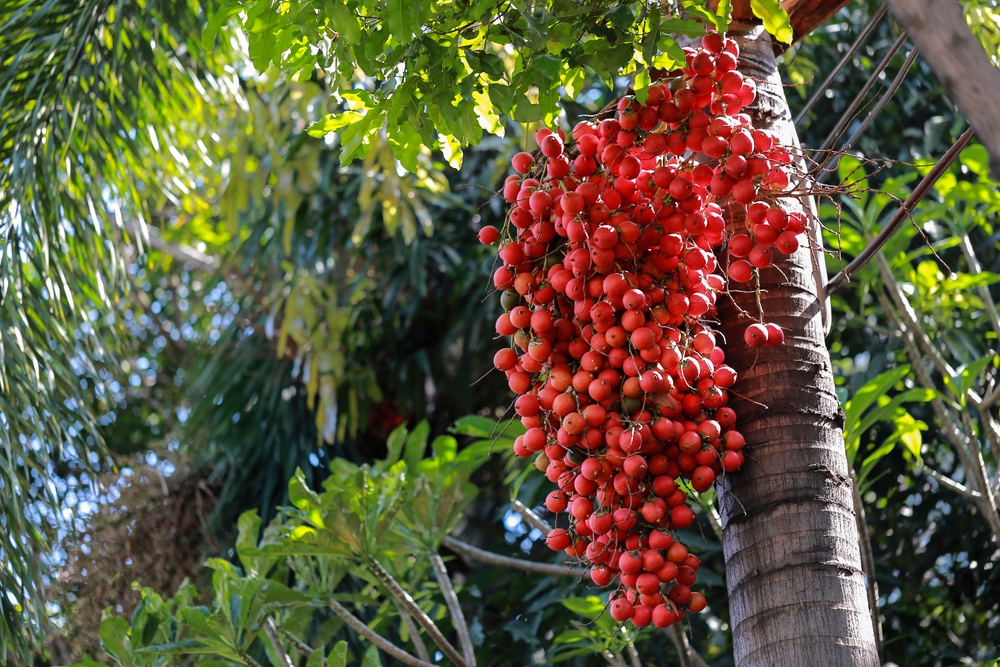
Although the palm tree is native to the Philippines, you will find plenty of the Manila Palm throughout your travels in the Dominican Republic.
Many people know the Manila Palm as the “Christmas Palm” because of the way its bright right fruit complements the greenness of the leaves.
This palm tree is considered to be on the smaller side, although not nearly as small as Dwarf Palms, with an average height of twenty-five feet.
However, these impressive palm trees can grow to be as tall as fifty feet if given the opportunity.
The Manila Palm is very similar to the Royal Palm in regard to its growing habits and can adapt and grow in just about any environment – as long as it isn’t too cold.
Because of this, the Manila Palm is one of the most popular palm trees in the country and you will find them everywhere you go.
Because they are so easy to maintain, this palm tree can even be planted inside a pot and taken indoors without any issues.
So, when you are on the hunt for this famous Christmas Palm, remember to keep your eyes peeled during walks through residential neighborhoods and strolls through indoor locations like malls.
8. Mexican Fan Palm
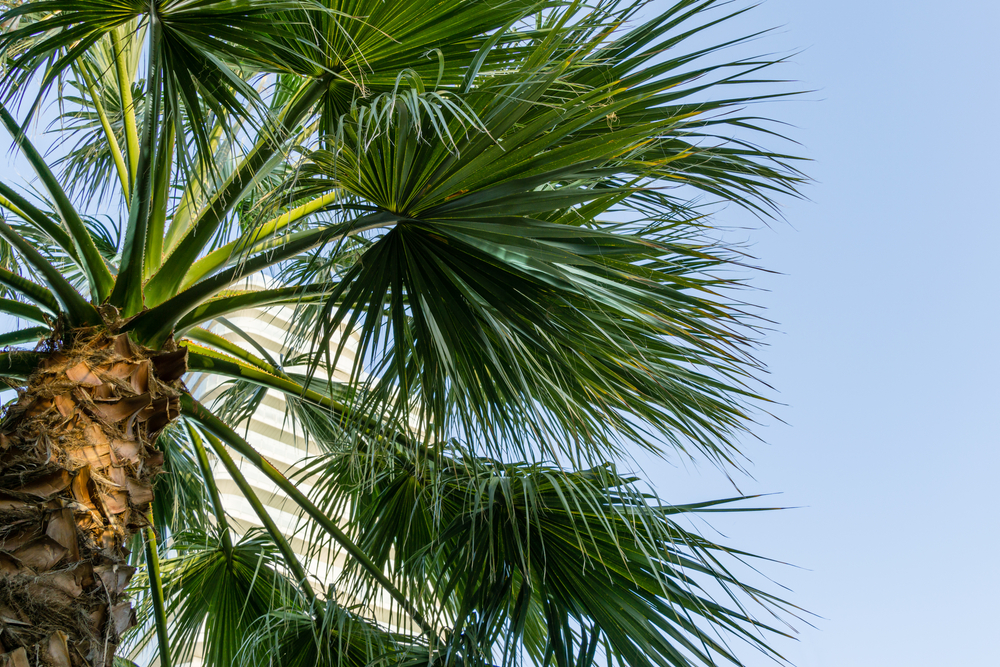
Also known as Washingtonia robusta, the Mexican Fan Palm is another palm tree species that are not native to the Dominican Republic – but it still has its fair share of appearances.
As you can guess by the name, the Mexican Fan Palm originated in Mexico, but it is also native to the southern part of California where the climate is similar.
However, it quickly naturalized in countries all over the world boasting similar weather patterns and that is why the Mexican Fan Palm flourishes in the Dominican Republic.
These types of palm trees are hard to miss because their skinny stems tower up nearly one hundred feet to create a truly spectacular sight.
The leaves atop this palm tree create a dense fan with many leaflets but don’t expect to get any cover from the sun – the fans are too high up off the ground to create any shade.
Although there are other palm trees with similar builds, you can easily tell a Mexican Fan Palm from the rest by the unique fruit it bears.
Vibrant flowers boasting colors like pink and orange give way to a delicious cluster of fruit that can be quickly spotted by its blue-black coloring.
The Mexican Fan Palm is extremely vulnerable to cold weather but in warm climates, like the Dominican Republic, it can live upwards of five hundred years!
They are common in the Dominican Republic because locals very rarely have to replace these ornamental palms.
9. Traveler’s Palm
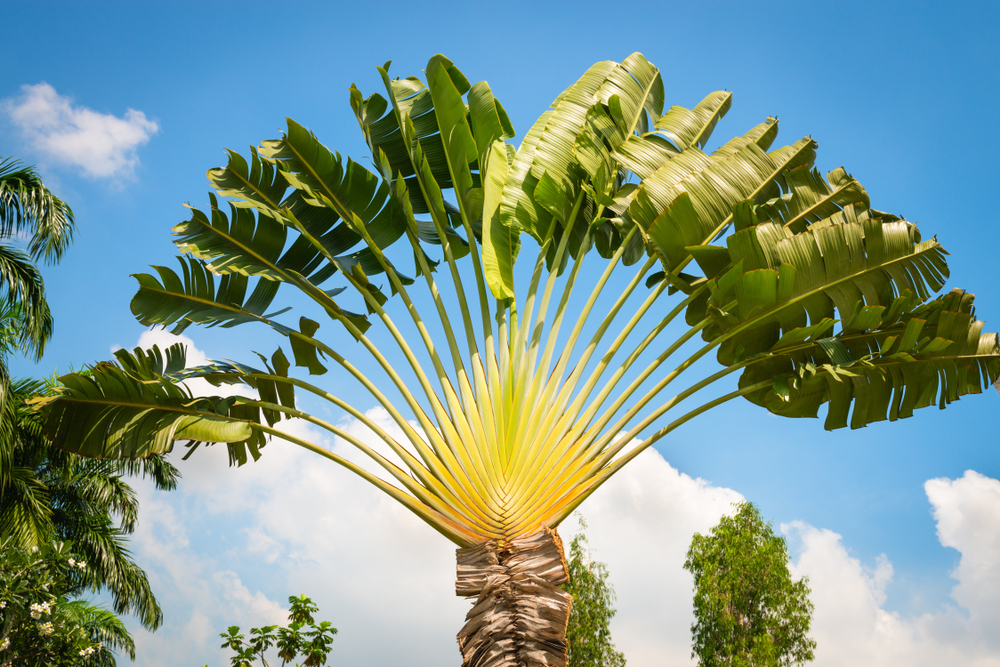
Although it is not technically a palm tree, the Traveler’s Palm bears so many of the same characteristics that it would be wrong not to add to this list of palms in the Dominican Republic.
In all actuality, the Traveler’s Palm is a type of flowering plant that is most like the banana trees found in Asia – but its resemblance to a palm tree is uncanny.
The “traveler’s” part of its name was given to this plant because of the way that it provides easy access to water for passing travelers who may be in need of it.
Just keep in mind that the water that is stored in the plant’s sheaths is quite dirty and should only be consumed after going through a purification process.
And although the plant has many similar physical traits to a palm tree, like fan-like leaflets and thick, wide-stretching stems, it is easy to tell it apart from the rest.
This is because the Traveler’s Palm’s leaves create a fan shape, unlike the leaves of its distant relatives.
Some even refer to this shape as a crown because of the way the leaves fan out into an arch that stands tall atop its towering stem.
How this plant is cared for will determine its height but in its native environment, untouched by outside influences, there are records of heights reaching nearly one hundred feet.
But for the most part, you will find that the Traveler’s Palms in the Dominican Republic grow to an average of twenty feet and are usually spotted around large resorts to add to the feeling of luxury.
10. Pygmy Date Palm
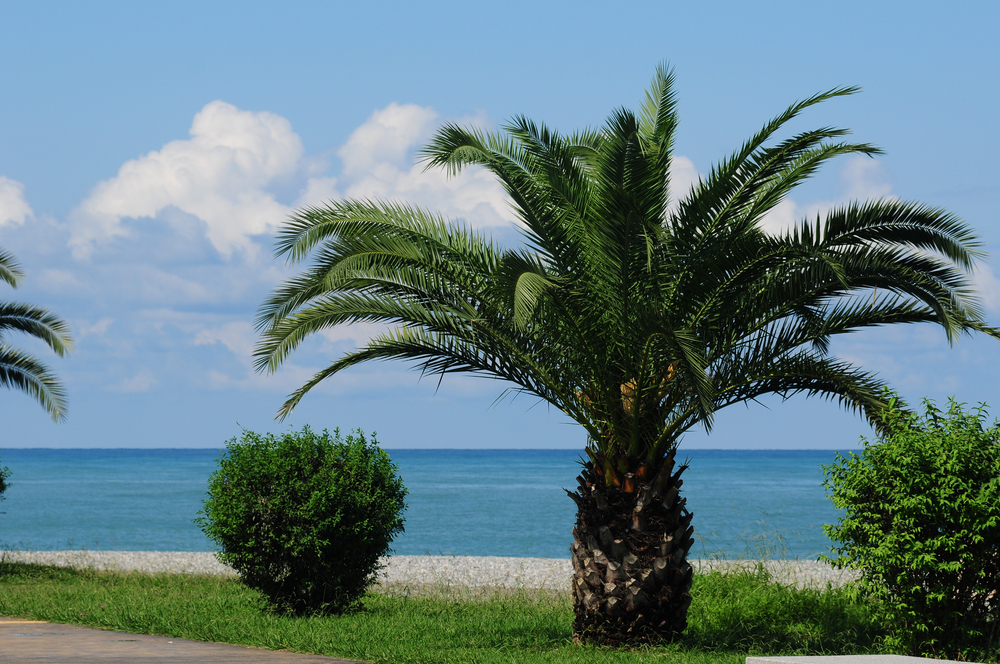
With many nicknames that all revolve around its height, you can probably guess that the Pygmy Date Palm has some defining characteristics and these are all part of the reason why it is such a popular palm tree in the Dominican Republic.
Some of those nicknames include the Dwarf Date Palm and the Miniature Date Palm which should make it pretty obvious that this type of palm tree does not grow very large.
In fact, the tallest Pygmy Date Palm on record is about thirty feet but most dwarf palms never reach a height that exceeds ten feet.
Because the stem of this palm tree is so short, the leaves look even more spectacular with most leaflets totaling out to be half the length of the tree itself.
With leaves this long it is not uncommon for the feather-like leaves to sag down around the palm tree and cover much of the stem.
Aside from their height, the Pygmy Date Palm also gets a portion of its name from the tasty drupe fruit it produces that just so happens to resemble a date.
This popular fruit is accompanied by a cluster of vibrant yellow flowers that really bring the leaves of this fascinating palm tree to life.
The Pygmy Date Palm is native to Asia, but it can be found in many places around the globe thanks to its ability to withstand harsher climates.
Even when the temperature drops into the mid-twenties (Fahrenheit), the Pygmy Date Palm is still able to grow with ease and this is why it has become such an ornamental gem.
You will find this beautiful palm tree throughout residential neighborhoods, scattered around big establishments, and even potted within the homes of local residents.
11. Queen Palm
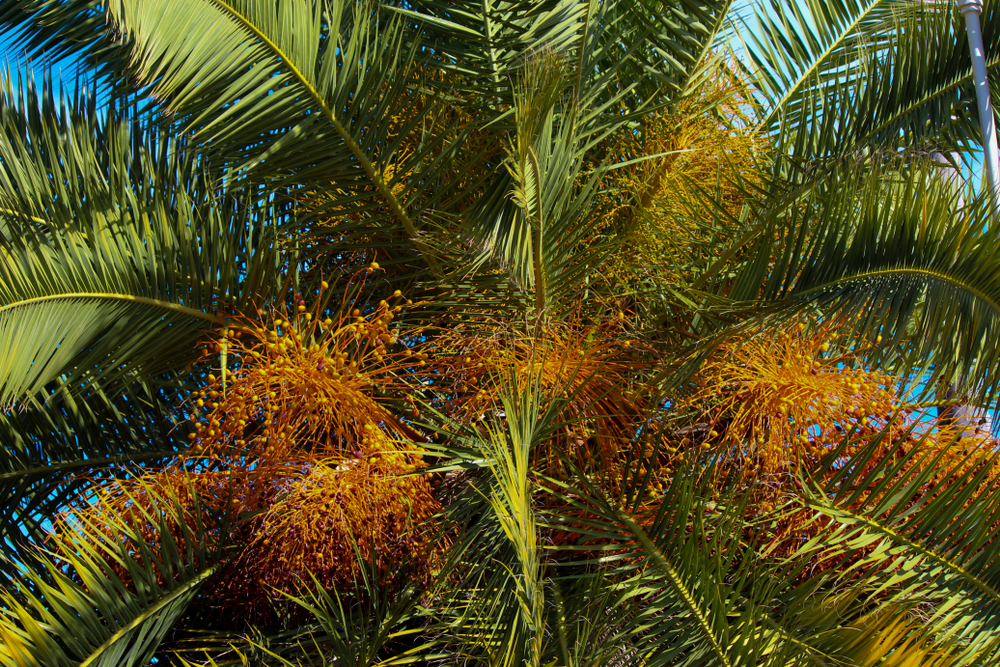
Although the Queen Palm is native to South America, it has quickly become one of the most popular palm trees found in tropical countries, including the Dominican Republic.
Queen Palms are highly sought after as ornamental trees because of their ability to grow nearly anywhere.
Residents looking to spice up their front lawn will often choose the Queen Palm because it doesn’t take very long to reach maturity, so there isn’t a long wait to enjoy the beauty of your investment.
This is why you will see an abundance of these beautiful palm trees growing in residential neighborhoods or amongst large establishments like shopping centers.
Not to mention the fact that this particular type of tree has the staple look for a palm tree with its towering, smooth stem and fan-like leaves featuring hundreds of little leaflets.
On average, these iconic palm trees can grow as tall as fifty feet, and their ability to withstand colder temperatures make them extremely easy to maintain.
12. Bamboo Palm
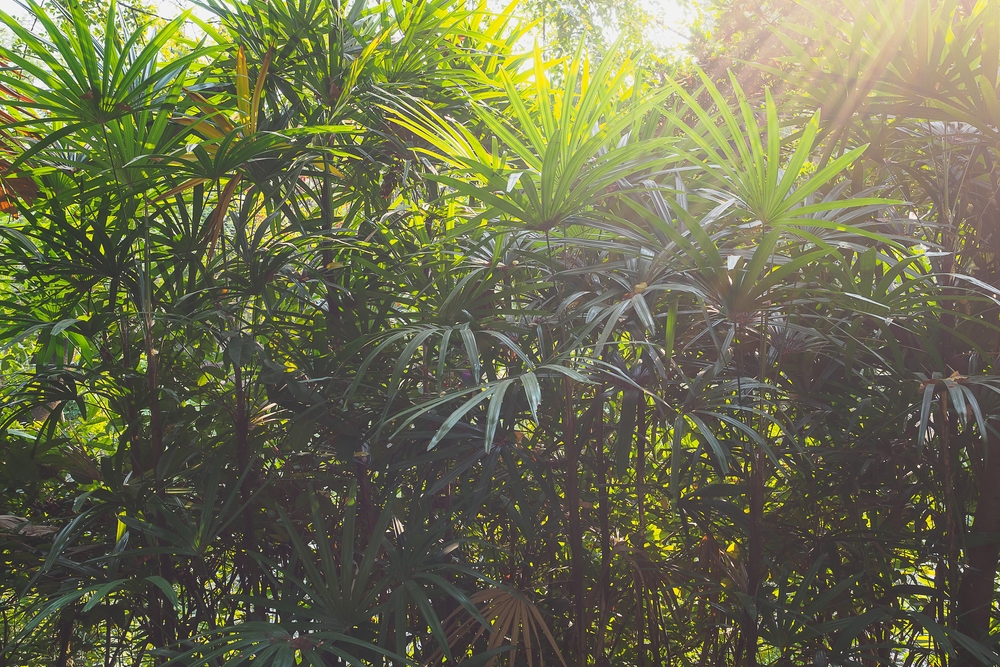
Anyone lucky enough to spot a Bamboo Palm during their time in the Dominican Republic is in for a real treat, but much of its population is located within the homes of local residents.
However, that is not to say that you can’t spot one of these unique palm trees out in the wild if you plan to explore some of the tropical forests during your trip.
It may come as a surprise that the Bamboo Palm has no relation to the bamboo plant, considering its striking resemblance.
The Bamboo Palm has a long, skinny stem that looks exactly the same as a piece of bamboo, but it can easily be distinguished by the fan-shaped leaves that sprout from the top of it.
You can expect to see Bamboo Palms reach a height of twenty feet but, because of their slender build, they almost never grow taller than this.
There are quite a few different subspecies of Bamboo Palm, so you may hear the tree be referred to by a different name from time to time but when in doubt, check the appearance of the stem.
13. Zombie Palm
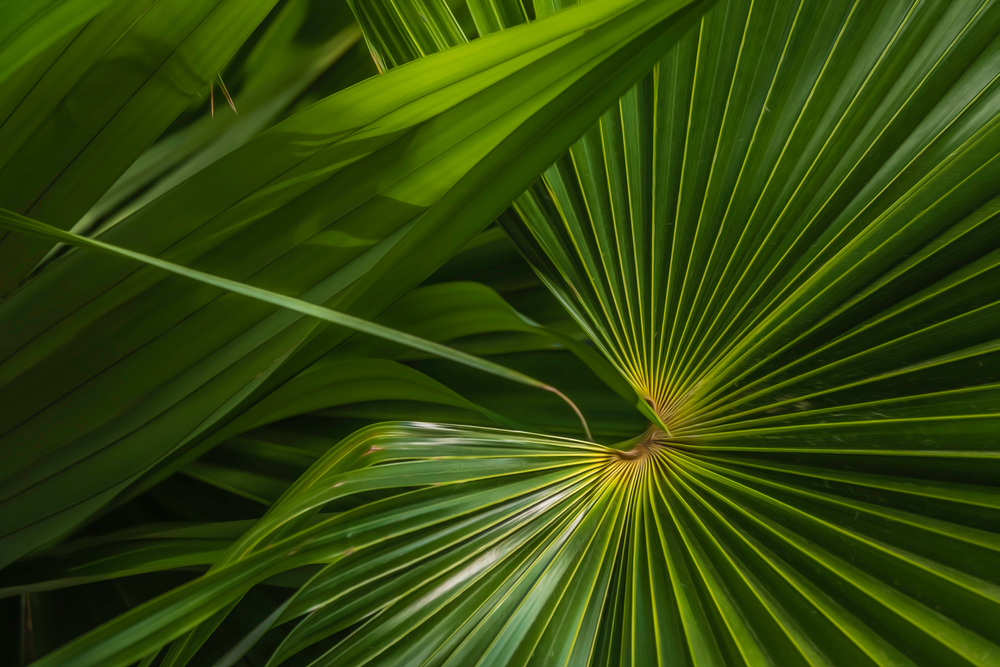
The Zombie Palm might have a less-than-appealing name, but it is safe to say that this palm tree wasn’t named this because of any relation to the undead.
In all actuality, the Zombie Palm got its name simply by shortening its binomial name, Zombia antillarum, so visitors don’t have anything to fear.
This is one of the few types of palm trees that is actually native to the Dominican Republic but although it originated in the northwest region of the country, it can now be found all over.
One of the defining characteristics that make it easy to identify is its short height, considering the fact that most other palm trees far exceed its ten feet in height.
This type of palm tree has multiple, skinny stems that grow in a small cluster and create a fuller look that is popular for ornamental purposes.
Each of the stems has its own set of leaves, usually ranging from eight to ten, and every leaf has a series of leaflets that create a fan-like shape.
Head inside a big establishment like a mall to see this palm tree in any part of the country, or venture to places like the Sierra de Yamasá and Puerto Plata for a chance to see it in the wild.
Just remember that this type of palm tree will most likely be found in dry areas below fifteen hundred feet where there are many small hills.

